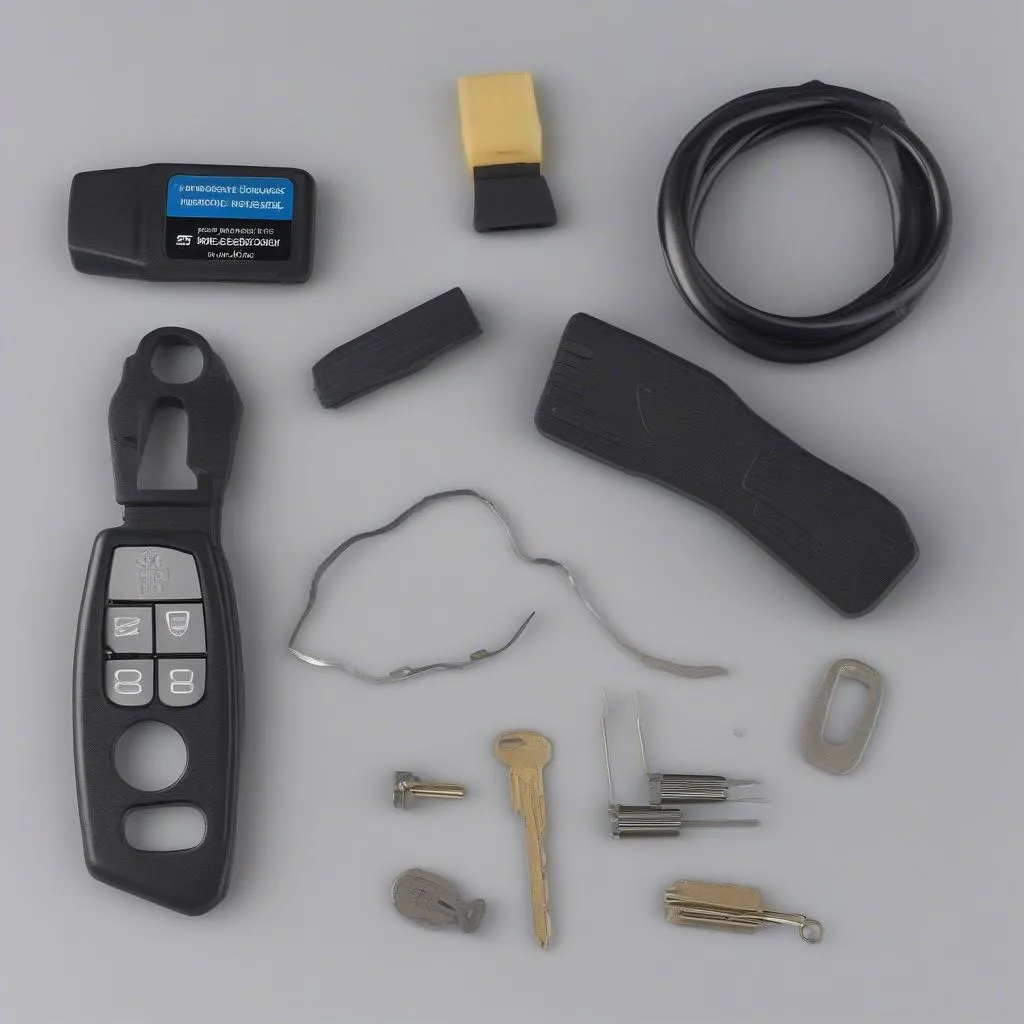A passive anti-theft system, in its simplest form, is your car’s silent guardian against theft. Unlike active systems that require driver intervention like actively arming an alarm, passive systems work behind the scenes, automatically engaging without you lifting a finger. Think of it as an invisible shield, always up and ready to deter would-be car thieves.
Understanding the Silent Protector: How Passive Anti-Theft Works
At the heart of a passive anti-theft system is the immobilizer. This clever device, typically integrated into the engine control unit (ECU), prevents the engine from starting without the presence of a specific signal from your car key. Imagine it as a digital handshake; only your key possesses the right code to unlock the engine.
Spotting a Failing Passive Anti-Theft System
Often, the first sign of a problem is your car refusing to start, even with a perfectly good battery and starter. This refusal, accompanied by a flashing security light on your dashboard (often a blinking car icon or the word “security”), often points towards a potential issue with the passive anti-theft system.
Equipping Yourself for the Fix
Before diving into troubleshooting, it’s helpful to have a few tools on hand:
- A high-quality diagnostic scanner: This will be your window into the car’s computer, allowing you to read error codes and analyze the immobilizer system. We recommend checking out the range of advanced diagnostic tools at Cardiagtech.com to find the perfect fit for your needs.
- Your car key: Seems obvious, right? But having a spare key handy can be a lifesaver, helping you rule out a faulty key as the culprit.
- A reliable internet connection: For accessing online repair manuals or seeking remote diagnostic support.
Troubleshooting Your Passive Anti-Theft System: A Step-by-Step Guide
While the exact steps may vary slightly depending on your car model, here’s a general guide:
- Check the Obvious: Begin by ensuring the car key’s battery is not depleted. Try using the spare key if you have one.
- Visual Inspection: Examine the ignition cylinder for any signs of damage or debris that might be obstructing the key from being properly read.
- Dive into Diagnostics: This is where a diagnostic scanner proves invaluable. Connect it to your car’s OBD-II port, typically located under the dashboard on the driver’s side.
- Read Error Codes: The scanner will retrieve diagnostic trouble codes (DTCs) stored in the ECU. These codes, like digital breadcrumbs, can pinpoint the source of the issue within the immobilizer system.
- Decoding the Clues: Consult your car’s repair manual or a reliable online database to decipher what each DTC means. This step is crucial in guiding you towards the specific component requiring attention.
- Addressing the Root Cause: The solution can range from simple fixes like replacing a faulty key fob battery or antenna to more complex procedures like reprogramming the immobilizer system.
 Car Diagnostic Scanner Connected to OBD Port
Car Diagnostic Scanner Connected to OBD Port
Common Questions About Vehicle Passive Anti-Theft Systems:
- Can I bypass the immobilizer completely? While technically possible, it is highly discouraged. Bypassing the immobilizer compromises your car’s security, making it a prime target for theft.
- My key fob battery is dead; can I still start my car? Some cars have a hidden key slot or backup system to allow starting with a dead key fob. Consult your owner’s manual for instructions specific to your vehicle.
- The system is working intermittently. What could be wrong? This behavior often suggests a loose connection, a failing component (like the antenna ring around the ignition cylinder), or a dying car battery.
 Mechanic Inspecting Car Ignition System
Mechanic Inspecting Car Ignition System
If you’re uncomfortable delving into the intricacies of automotive electronics, seeking professional help is always the wisest course of action. Contact a qualified auto electrician or consider remote diagnostic services offered by companies like Cardiagtech for expert guidance tailored to your specific vehicle and situation.
Remember, a properly functioning passive anti-theft system provides invaluable peace of mind, ensuring your car remains yours.
Need Expert Help? Connect with CARDIAGTECH for industry-leading diagnostic solutions and remote assistance.


